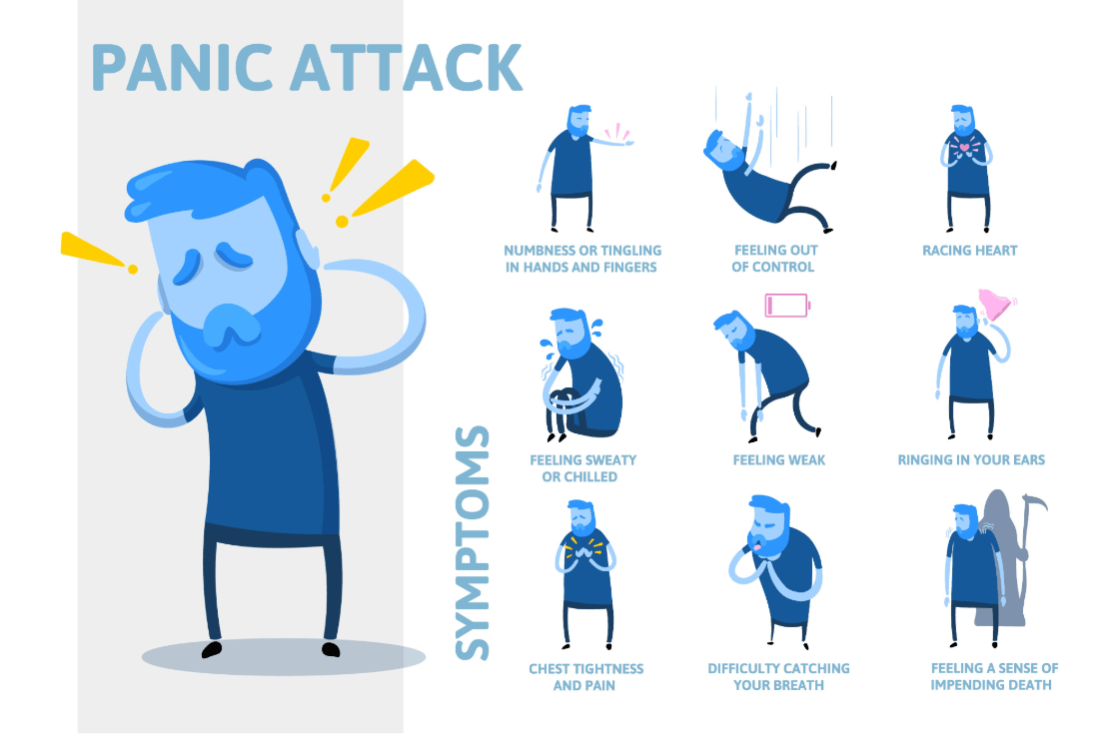Panic attacks can be a terrifying experience for those who suffer from them. These sudden and intense bursts of fear can leave you feeling helpless and alone in the moment, leading to avoidance behaviors and a diminished quality of life. But the good news is that understanding the triggers of panic attack (napadaj panike) and learning how to reduce their frequency can be effective in preventing and managing future attacks.
In this blog post, we will explore what panic attacks are, what triggers them, and how you can reduce their frequency. We will dive into techniques that can be used to manage panic attacks, and ways to maintain a calm and balanced state of mind.
1. What are Panic Attacks
Panic attacks are unexpected bursts of intense fear or discomfort that can strike at any time. They are typically accompanied by physical symptoms such as rapid heart rate, sweating, and shortness of breath. Panic attacks can last for several minutes to hours, and may happen repeatedly if untreated.
2. What are the Triggers of Panic Attacks
Panic attacks can be triggered by a variety of factors. These could include stressful or traumatic life events, genetic predisposition, medical illness, and substance abuse. Triggering events or circumstances can lead to feelings of anxiety or stress, which can quickly escalate into a panic attack.
3. Reducing the Frequency of Panic Attacks
While it is not always possible to prevent panic attacks, there are techniques that can be effective in reducing their frequency. Some of these techniques include:
– Cognitive Behavioral Therapy (CBT): This type of therapy helps you identify irrational beliefs or thoughts that may contribute to panic attacks, and aims to replace them with more positive and realistic beliefs.
– Mindfulness Meditation: This technique involves focusing on the present moment and your breath. It can be helpful in managing feelings of anxiety and stress, which are common triggers of panic attacks.
– Exercise: Engaging in regular physical activity can help reduce the frequency of panic attacks. This is because exercise releases endorphins, which are natural mood boosters that can decrease feelings of anxiety or depression.
– Self-care: Keeping yourself healthy and well-rested can help reduce the frequency of panic attacks. Eating a balanced diet, getting enough sleep, and avoiding substances like alcohol or caffeine can all be effective in managing anxiety.
4. Maintaining a Calm and Balanced State of Mind
In addition to the techniques mentioned above, there are several other ways to maintain a calm and balanced state of mind. These include:
– Breathing exercises: Taking deep breaths and exhaling slowly can help regulate your breathing and calm your nerves during a panic attack.
– Progressive muscle relaxation: This technique involves tensing and releasing muscles in sequence, which can be effective in reducing feelings of stress or anxiety.
– Journaling: Writing down your thoughts and feelings can help you process and understand your emotions, which can reduce your risk of a panic attack.
Conclusion:
Panic attacks can be a debilitating condition that can negatively impact your daily life. But by understanding the triggers of panic attacks and learning how to reduce their frequency, you can take control of your mental health and improve your overall well-being. Remember that seeking support from a mental health professional can be an effective way to manage panic attacks and restore balance to your life.
Creating a Plan for Coping With Anxiety or Panic Disorders That Can Be Used Every Day
